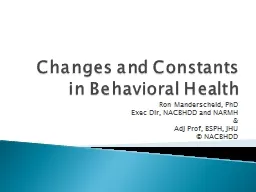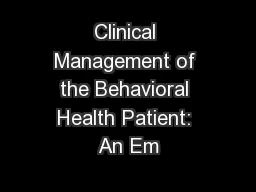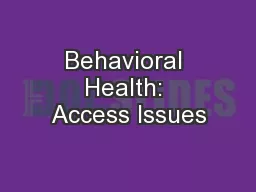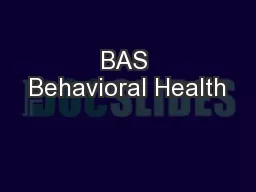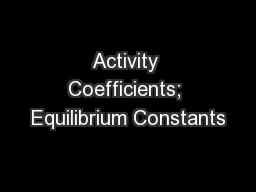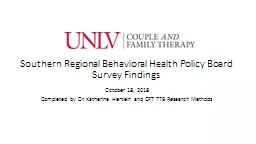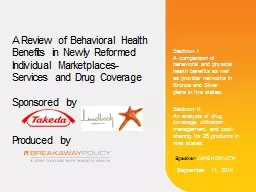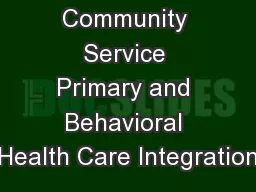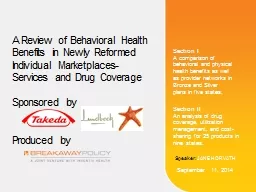PPT-Changes and Constants in Behavioral Health
Author : celsa-spraggs | Published Date : 2018-09-21
Ron Manderscheid PhD Exec Dir NACBHDD and NARMH amp Adj Prof BSPH JHU NACBHDD Time for a Thrilling Ride Report of President Obamas Task Force on Parity for Mental
Presentation Embed Code
Download Presentation
Download Presentation The PPT/PDF document "Changes and Constants in Behavioral Heal..." is the property of its rightful owner. Permission is granted to download and print the materials on this website for personal, non-commercial use only, and to display it on your personal computer provided you do not modify the materials and that you retain all copyright notices contained in the materials. By downloading content from our website, you accept the terms of this agreement.
Changes and Constants in Behavioral Health: Transcript
Download Rules Of Document
"Changes and Constants in Behavioral Health"The content belongs to its owner. You may download and print it for personal use, without modification, and keep all copyright notices. By downloading, you agree to these terms.
Related Documents

